In August, we spent a 3 day weekend on Easter Island, known locally as Rapa Nui. Rapa Nui is one of the most remote inhabited islands on Earth, located in the Pacific ocean 3700 km (2300 miles) away from mainland Chile. Part of Polynesia, with Hawaii and New Zealand it forms the southeasternmost point of the Polynesian Triangle. Easter Island is most known for it’s mysterious large sculptures called moai.
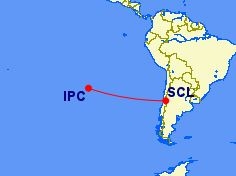
Getting There
Rapa Nui has the world’s most remote airport, Mataveri International (IPC). Only one airline, LATAM, flies to Rapa Nui and you can only arrive there from two cities: Santiago, Chile or Papeete, Tahiti. This island is so secluded that only one flight there is allowed at a time. There are no diversion points on this path, so you can’t have two flights going there at the same time. Flight schedules adjust depending on the season, but typically there are two flights from Santiago per day and one flight from Tahiti per week.
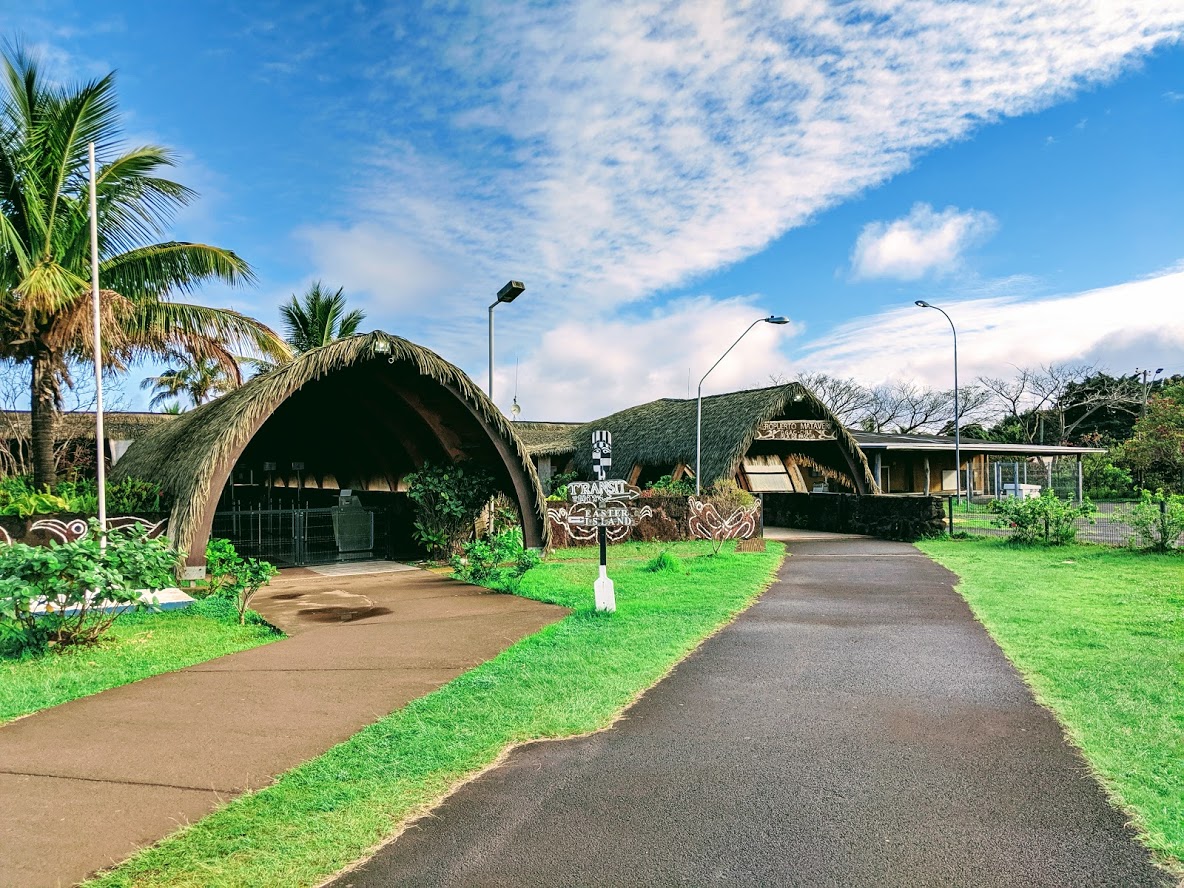
LATAM is a OneWorld alliance member so you should be able to redeem partner points for this flight, but availability is hard to come by. LATAM flies the 5 hour flight on a 787 Dreamliner. There are often decent sale prices. Be sure to check the business class fares. On this route, they are often the same price as economy! For our dates, business class tickets were just $4 more than the economy fares.
As an aside, residents of the island are eligible for a special fare that allows them to change dates without fees.
We took the 6:30 am flight from Santiago which means we arrived at 10 am island local time. This is great if you have limited time for the trip because you can get a full day of activity in on the same day of arrival.
Accommodations
There are no points hotels on the island. There is one all inclusive, Explora, which offers room and board plus all activities included. It is pretty pricey but could be a nice option for some. We stayed at Hotel Altiplanico which is considered in town but towards the outskirts. Altiplanico is setup so that each room is a separate building with the front desk and restaurant in the main house. The decor is interesting, it seems a little more rustic than island style. The website mentions luxurious gardens, but honestly the hotel landscaping was just odd to me. There are beautiful rose bushes planted in a seemingly random pattern. It didn’t look like the gardens were planned at all, it looks like people just planted things wherever they liked – much more English garden style.
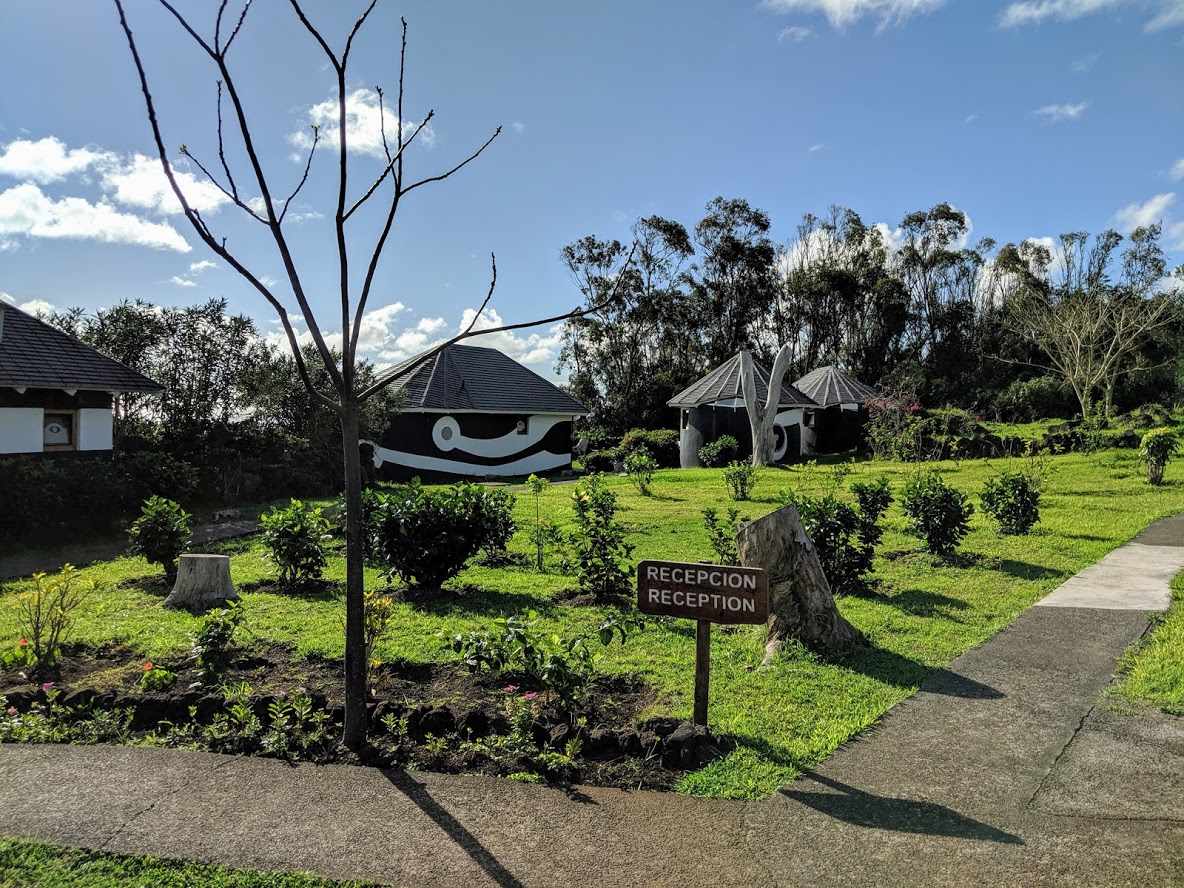
We had cottage #1 to the right of the main house. The property has a view of the ocean, but there is no beach or water access. Our room was clean and appointed with typical bathroom amenities. There is a ceiling fan, but no air conditioning. We did not need a/c in August (winter) but I can see how it might be uncomfortable in the summer time.
Breakfast is included and is a simple continental buffet with meats, cheeses, and pastries. Unfortunately, I didn’t love the coffee and the fresh juices were a bit bland.
We had lunch at the hotel restaurant as well, and our salmon entree and surf and turf kebobs were good but very expensive. Every entree on the menu is $30 with even pizza or a sandwich being $20.
Activities
The island is a UNESCO World Heritage site with almost half of it protected as a part of Rapa Nui National Park. You must purchase a park ticket to visit the archaeological sites. The park ticket is $80 per person (54,000 CLP).
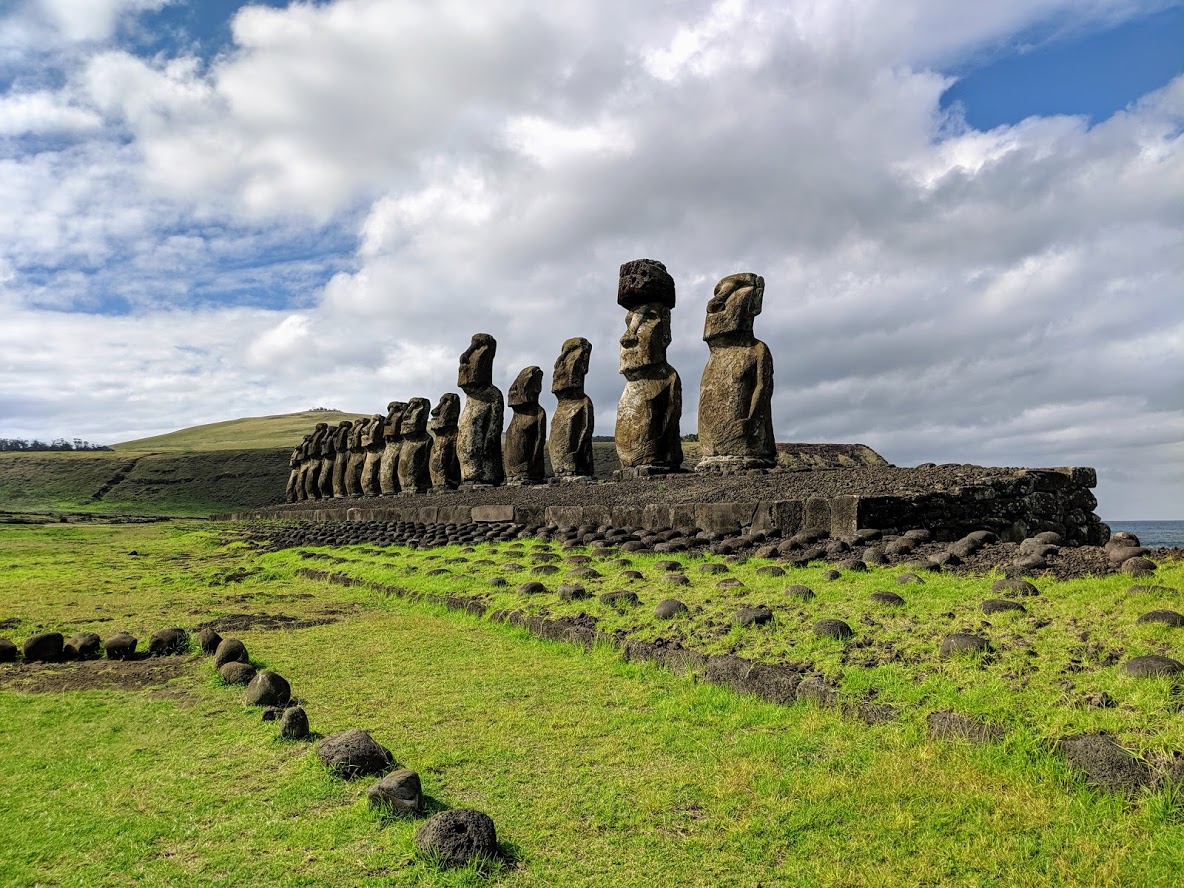
We hired a private guide, Claudio, to take us around the island and I’m so glad! Yes, you can rent a car and drive yourself to all the spots, but you will miss all the stories and information that make those sites memorable. Claudio (day 1) and Alejandro (day 2) were both very knowledgeable – it was quite amazing! On Friday Claudio picked us up from the airport and we started touring the island immediately. We learned so much about the moai, seeing how they were built, how they changed over time, and how they were abandoned. It’s all quite fascinating how these huge statues were created out of volcanic rock and placed all over the island hundreds of years before modern technology.
Day 1 – Full Day (about 7 hours)
Vaihu, Akahanga, Rano Raraku, Tongariki, and Anakena
Day 2 – Half day tour (about 3 hours)
Vinapu, Rano Kau, and Orongo
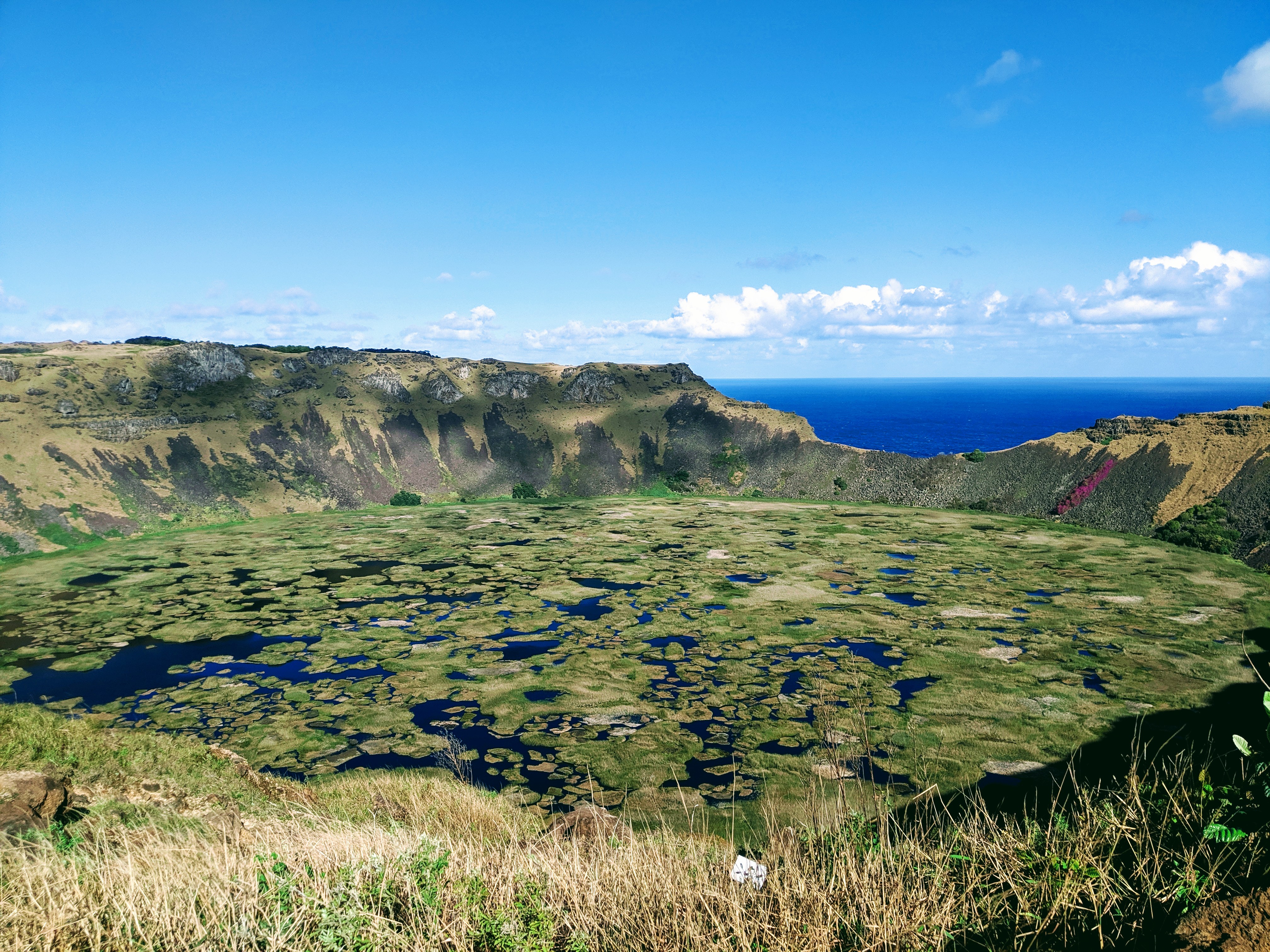
Friday evening we went to a Polynesian dinner and show at Te Ra’ai. Reservations include transfers to/from your hotel. Dinner is cooked in the traditional Polynesian way with hot stones in the ground. The show reminded me of luaus we attended in Hawaii. We enjoyed it but we were just really tired. I wouldn’t recommend it on the day you fly in. Dinner starts at 9 pm and the show is over around 11 pm. This is a late night and long day if you began your day in Santiago (2 hours ahead).
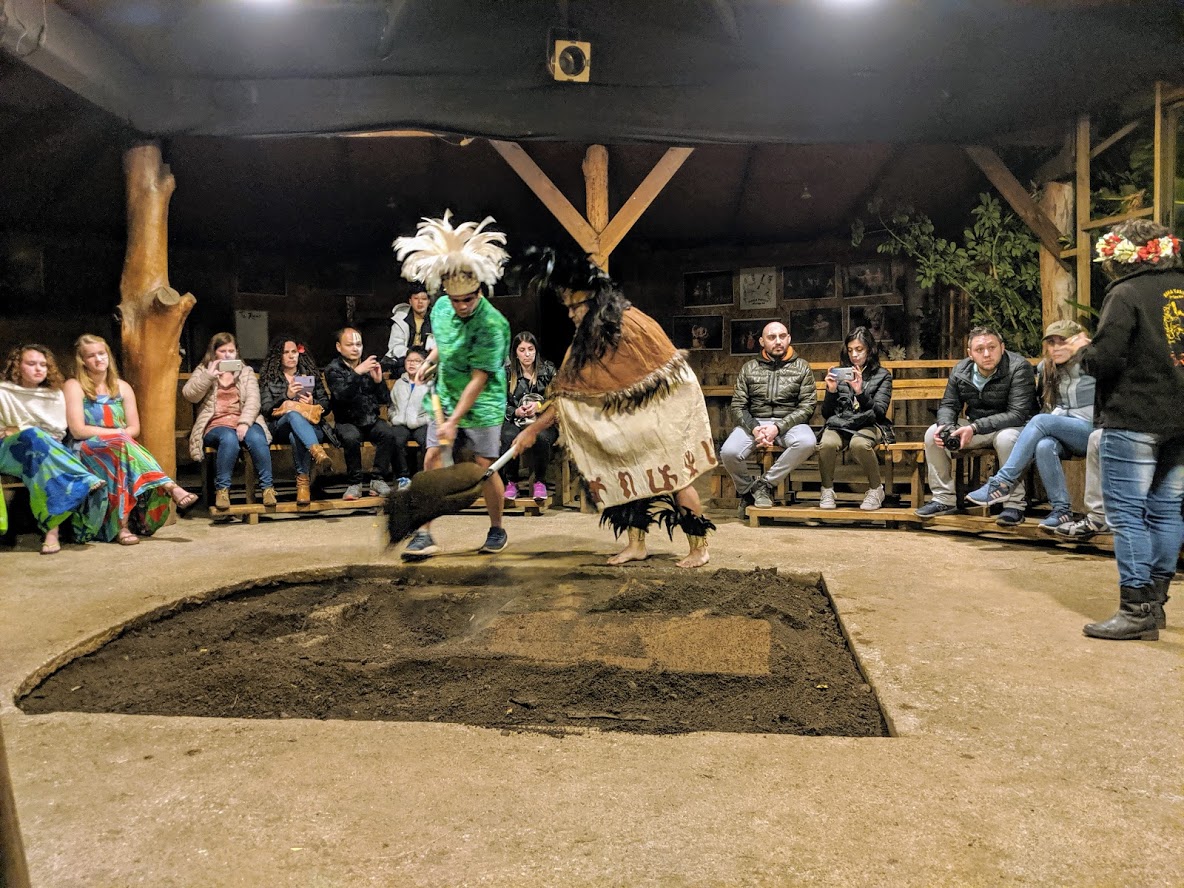
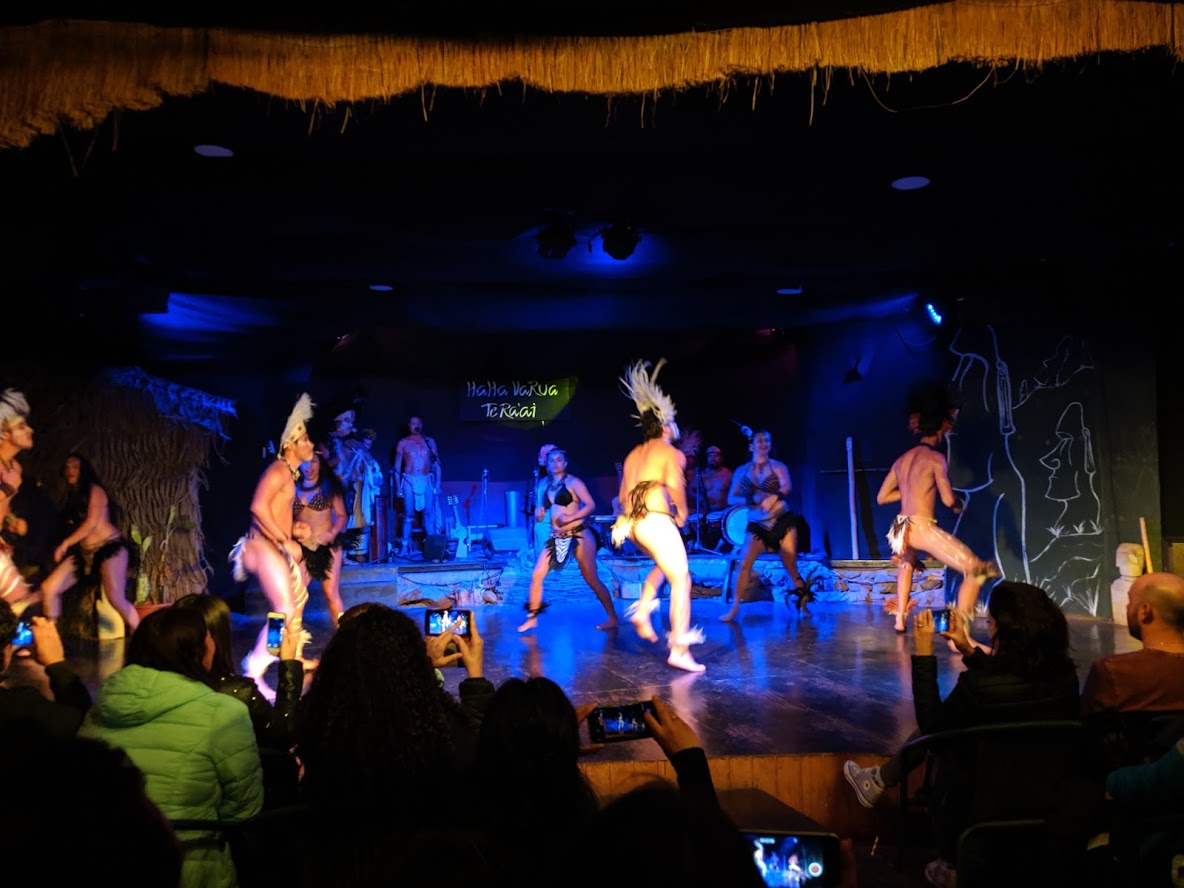
Food
Te Moai Sunset is a restaurant near the Tahai site that has beautiful views of moai and ocean. We had dinner there and enjoyed the food. It’s also a nice place to just have a drink and watch the sunset.
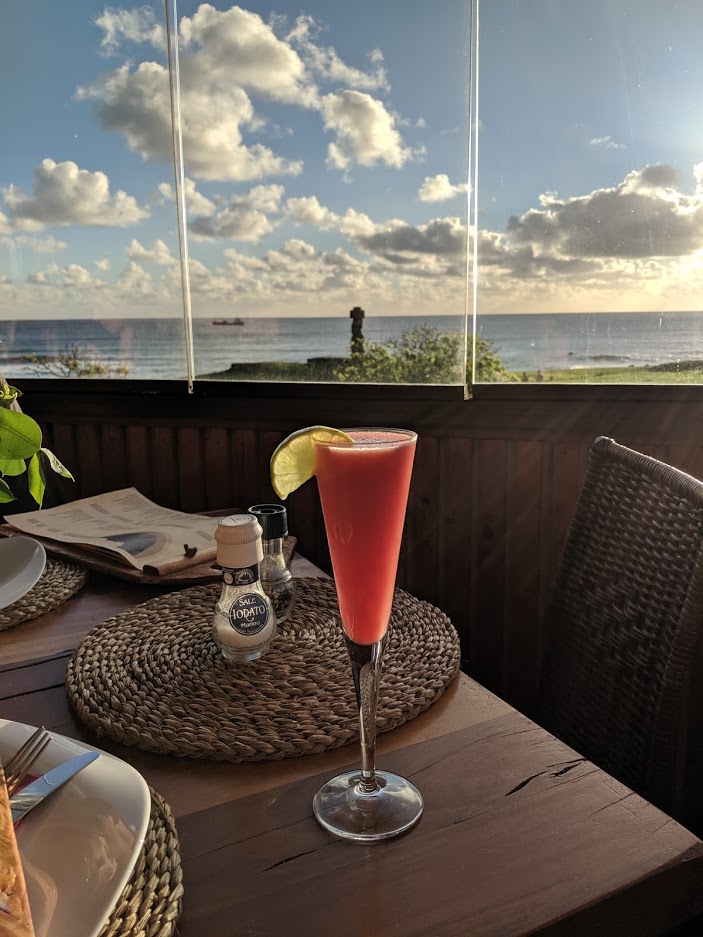
Ceviche is a thing here. Definitely recommend trying it as they do it a little bit differently than the Peruvians.
Returning Home
We returned home on a Sunday afternoon flight. It’s pretty unique when everyone at the airport is getting on the same plane. For the inbound flight we had the right plane, a 787, and the seats and service were very nice. The flight back was a little faster and had us arriving in 4 hours. It was a nice end to our quick visit.

